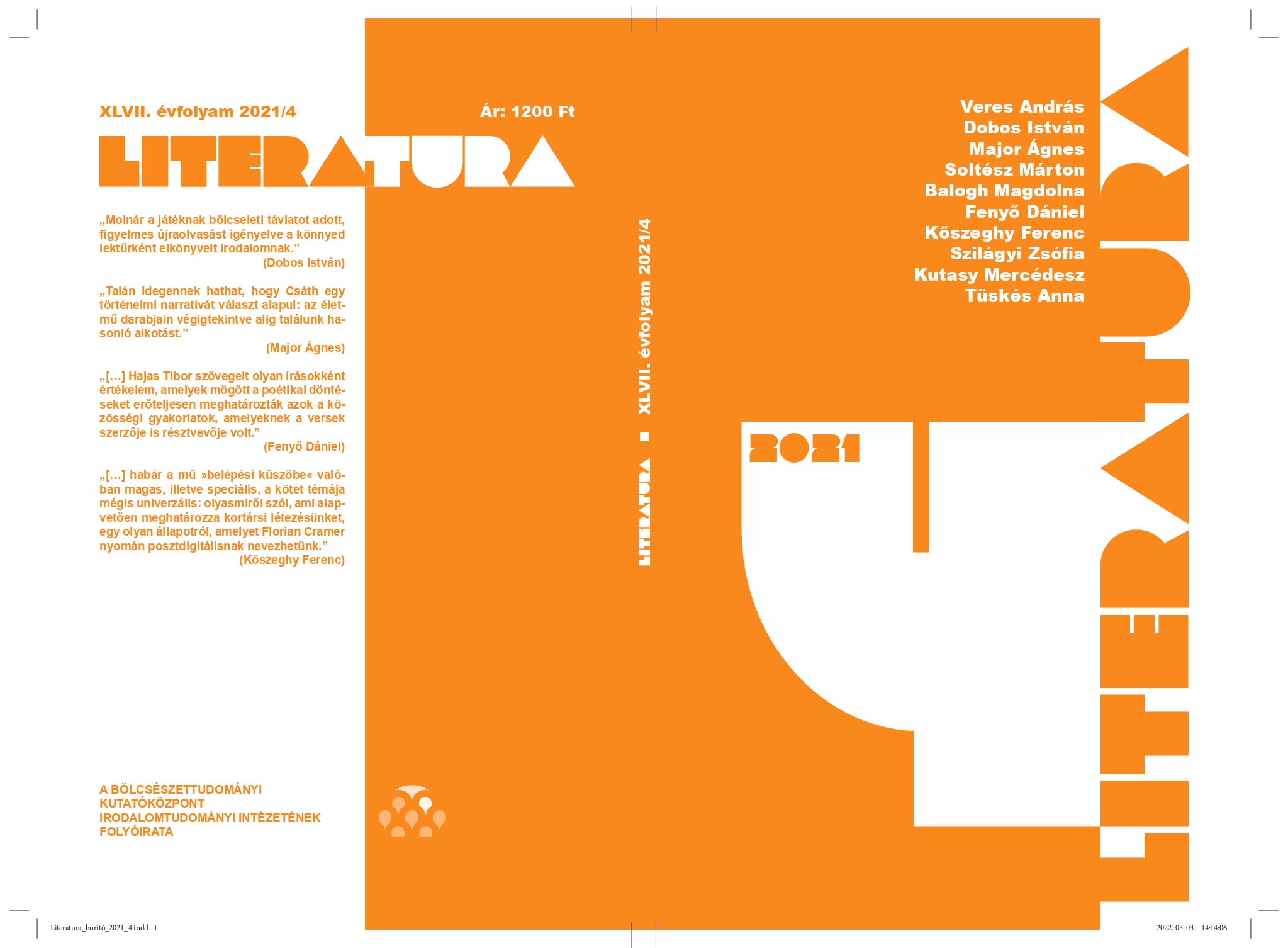Énkeresés, családtörténet, trauma
Tompa Andrea A hóhér háza című regényének értelmezése
Absztrakt
Self-discovery, Family-History, Trauma
Interpreting Andrea Tompa’s novel The Hangman’s House
Andrea Tompa’s novel gives insight into a teenage girl’s coming of age during the last decades of the Ceauşescu regime, but it is both more and different than a simple dictatorship novel told from a teenager’s point of view. Its crux is the journey of self-discovery, which develops meaning in the context of the family history. This duality is reflected in the complexity of the novel’s genre, with elements of the autobiographical novel, the Bildungsroman and family history combining into a hybrid form. Telling the story of three generations of a Transylvanian intelligentsia family from the 1940s until the fall of the dictatorship in 1989, the novel depicts all the crucial moments of 20th century Transylvanian history. The family’s story is edifying not only for the individual, but also for the greater community as well, their experiences showing the constant exposure to violence that those living in Transylvania have had to bear. Through postmemory, the traumas of the parents and the grandparents become a part of the protagonist’s personality as well, compounding her and her family’s experience of living in Ceauşescu era Romania, shedding light on her own childhood traumas (her relationship with her father and its background). Self-discovery and family history are joined together in the protagonist’s character, as the traumatic experiences of the family past become crucial parts of the protagonist’s self-knowledge and personality through postmemory. The novel’s poetic solutions – the fragmentary and mosaic-like structure, the long sentences, and the handling of timelines – all serve the protagonist’s particular process of self-discovery.



